
Factors.ai is a B2B ABM platform focusing on intent capture, GTM workflows, web visitor deanonymization, Ad tracking and management, view-through attribution, and more.
Let’s look at its features in detail, user reviews, and see if it’s the right fit for your ABM campaigns.
Factors.ai offers the following features:
If your ABM focus is squarely on LinkedIn ads, and you care more about company-level engagement, pipeline attribution, and native CRM sync than juggling a dozen tools, ZenABM might be all you need, at a fraction of the cost (starts @$59/month).
Factors.ai offers the following features for advertising:
Factors.ai integrates with these four B2B major ad platforms:
This integration includes pulling impression, clicks and cost data and also pushing dynamic audience lists from Factors.ai natively.
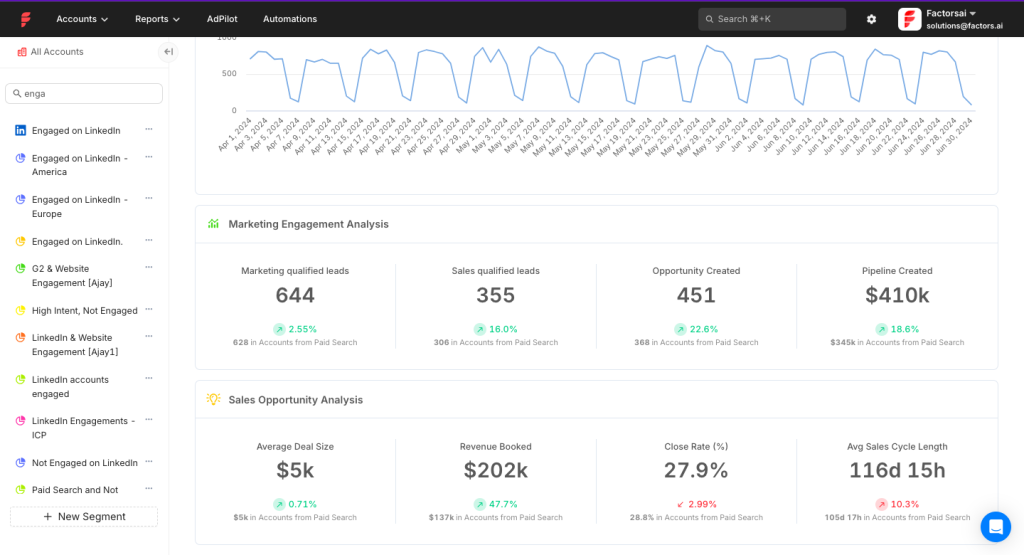
Factors.ai has a dedicated AI-powered solution for all its ad platforms. For example, its LinkedIn ad solution is called LinkedIn AdPilot, which offers these advanced features for your LinkedIn ad campaigns:
Creates precise target audiences by integrating data from various sources. You don’t have to import the audience list manually into LinkedIn Campaign Manager now, and can manipulate the audience list automatically from Factors.ai. Also, its Integration with LinkedIn Ads CAPI helps you refine audience lists based on conversion data from various online and offline channels.
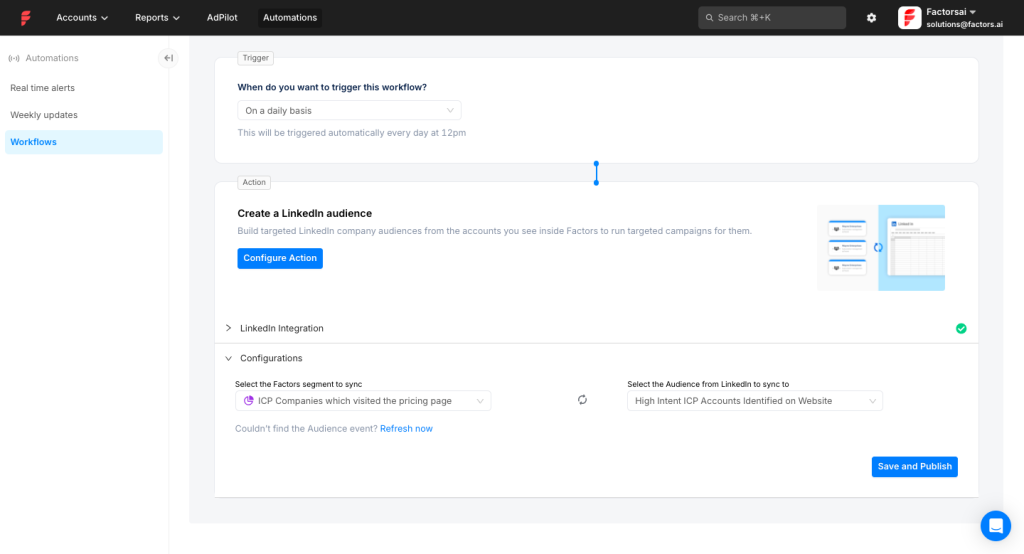
Ensures ads are evenly distributed across your target accounts to avoid overexposure to some and underexposure to others. So, you can ensure that huge companies don’t eat out all your impressions – you can stop showing them ads once an impression/click threshold has been reached.

Factors.ai doesn’t just merely capture clicks, but captures impressions, so you can attribute impact view-through attribution to ads on platforms like LinkedIn, which have a no-click environment.
The level of tracking is for both accounts and leads (for privacy, these leads remain anonymous until they give their details in forms, etc.).
This means, using Factors.ai, you can deanonymize accounts that only view your ads but don’t click.
Audience segmentation in Factors.ai is very flexible. Users can make an audience segmentation list based on their preferred mix of filters:
Then these segments can be pushed to your CRM/MAP or as dynamic audiences in ad platforms.
Using IP lookup and third-party data, Factors.ai can identify the company of an anonymous website visitor with industry-leading accuracy (or so it says). Factors.ai advertises that it can reveal up to 64% of anonymous traffic via IP-to-company matching.
And its anonymisation providers?
Clearbit and 6Sense
Clearbit helps with company identification and firmographic enrichment (size, industry, etc.)
6Sense provides buying stage and intent-related insights.
For this to work, you’ll have to install their SDK JavaScript on your site.
Note: Again, to stay compliant with GDPR, CCPA, and PECR, individual leads are not revealed.

Account Intelligence in Factors.ai enriches the account on the following parameters:
For any account (known or anonymously identified), Factors.ai can display firmographic details such as industry, company size, revenue range, location, and more.
Much of this can come from enrichment (Clearbit/6sense) or your connected CRM (e.g. pulling account fields from Salesforce). For example, a visitor’s IP might resolve to “ACME Corp – Industry: Manufacturing, 500-1000 employees, $100M-$500M revenue, Location: USA.”
These attributes help sales prioritise and tailor outreach. You can also bring in CRM info like account owner, current lifecycle stage, open opportunities, etc., since Factors.ai integrates with CRMs like Salesforce and HubSpot to ingest account and deal data.
Factors.ai tracks all sorts of engagement by an account across your marketing touchpoints.
This includes:
Then, for your ease, the tool rolls up all these engagements and touchpoints into an Account Timeline:
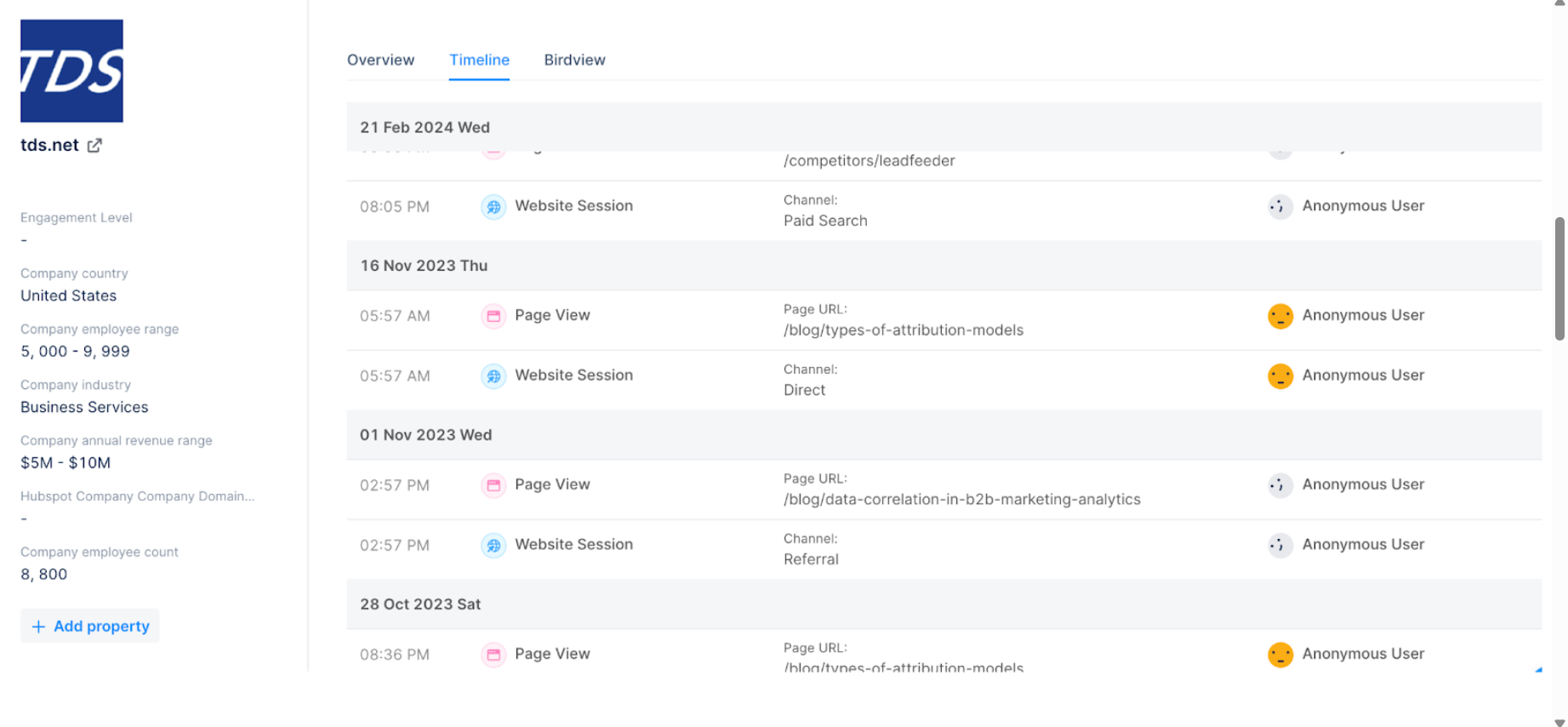
And the engagement touchpoints and engagement score can also be seen in the accounts list:

The tool has a native integration with G2.com to ingest buyer intent data – for instance, if someone from an account visits your product’s page or a category page on G2, that signal can be pulled in and attributed to the account.
Similarly, they enable importing intent data from sources like Gartner, TrustRadius, and others.
And the 6Sense integration we talked about adds another layer of its predictive data -“where the account is in the buying journey.
To help prioritise accounts, Factors.ai scores accounts based on engagement and fit.
Plus, the scoring configuration is customizable according to your preference.
This results in an engagement score for each account that quantifies how warm the account is:

Since Factors.ai pulls in multi-channel data, the score can incorporate ad engagement, web activity, email responses, and more. The scoring can be customised or even aligned to your own ICP criteria (for example, boosting scores for accounts in certain industries or roles). With real-time scoring updates, you could automatically push “sales-ready” accounts to reps as leads once they cross a threshold.

We discussed how various filters can be used simultaneously to group accounts into convenient segments. The same helps with account intelligence.
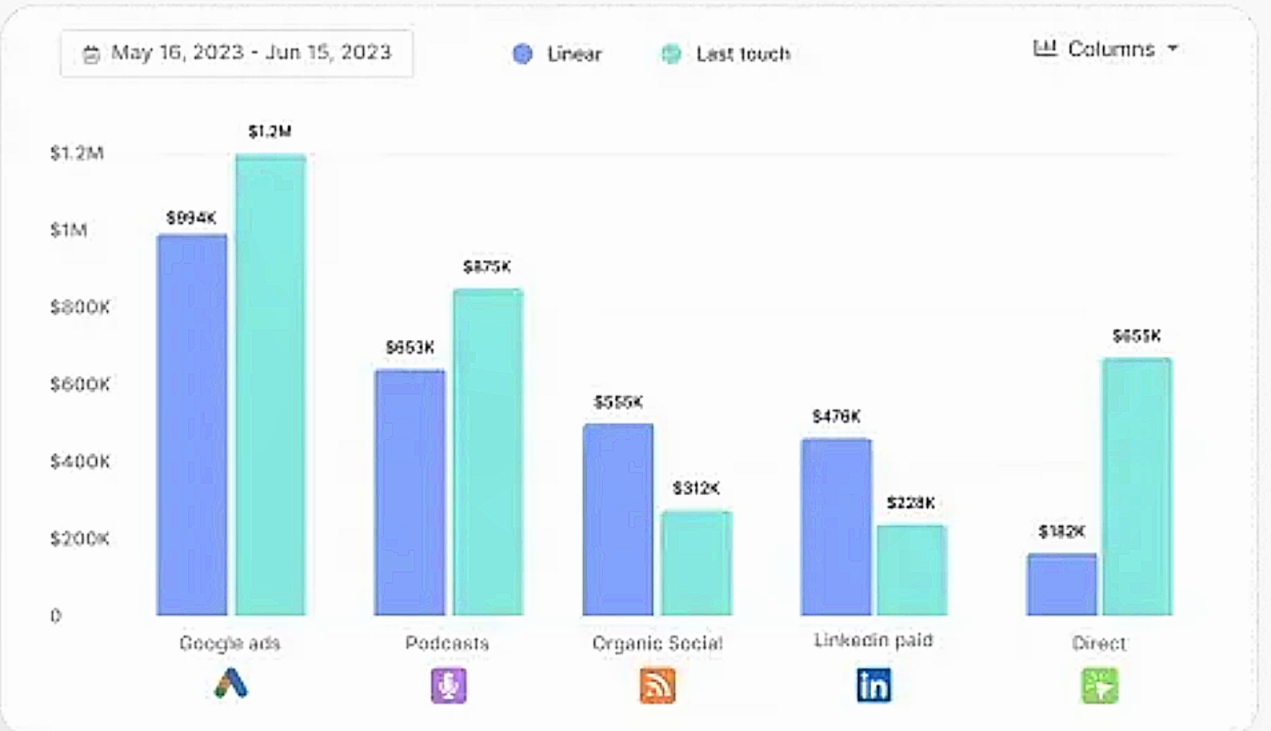
Factors.ai, with its ability to map all touchpoints from site to ads to CRM revenue and deals to email threads and chats, can give a multi-channel + multi-touchpoint attribution for your ABM outcomes.
By default, all the activities are logged as accounts and anonymously identified individuals, and the journey is visible as an Account Timeline:

In fact, Factors.ai is also able to do a dedicated content attribution:

Now, what attribution models are supported?
About nine, including First-Touch (all credit to the first interaction), Last-Touch (last interaction before conversion), Linear (even split), Time-Decay (weighted more to recent touches), and position-based models like U-Shaped and W-Shaped.
Here’s an example of an attribution report with two models displayed simultaneously:

Regarding website analytics, metrics such as metrics like “”Visits by target account”, “Pages viewed per account”, etc.
Each account’s site activity can be seen on the main screen:

and in the Account Timeline:

And regarding web personalisation – not possible natively – insights can inform the personalisation strategy, though.
Let’s look at the major GTM automation workflows provided by Factors.ai:
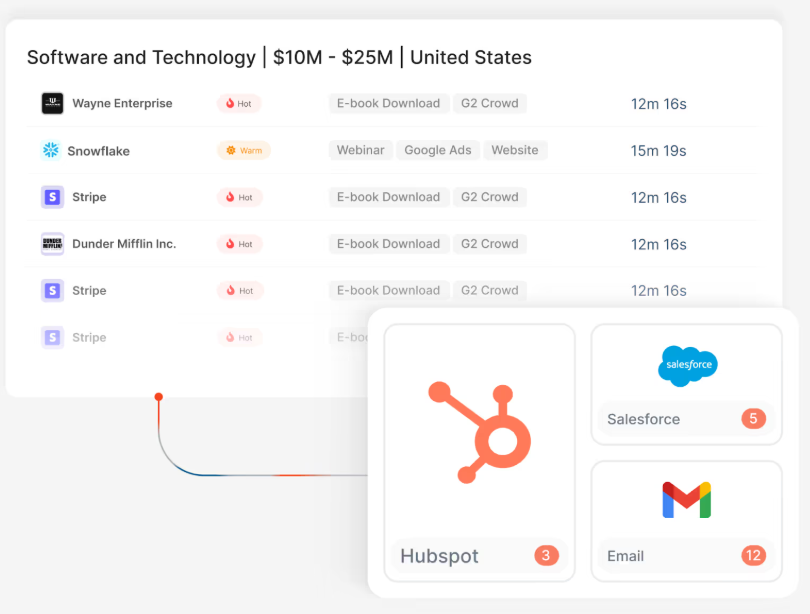
You can sync real-time account data, auto-enrich records with firmographics, and create tasks the moment key activity happens in your CRM using this platform.
Factors.ai auto-triggers personalised email sequences based on account behaviour and plugs into tools like Clay to scale hyper-targeted sales outreach without lifting a finger.
Factors.ai pings your Slack or Teams instantly when high-intent accounts engage—fully customizable.
Factors.ai auto-syncs engaged accounts to LinkedIn and Google Ads, controls ad exposure per account, and tracks conversions with GCLID and Conversion API.
Factors.ai auto-routes leads to the right reps, spots re-engaged accounts for timely follow-ups, and plugs into tools like Apollo and Outreach to keep sales humming.
We came across many integrations in the above sections, but some were missed, and the rest were all over the place.
So here’s a list of all integrations and their use-cases (reiterating that “a convenient hub of GTM integratiosn is what Factors.ai is):
| Integration Category | Details |
|---|---|
| CRM Systems | Native connectors for Salesforce and HubSpot CRM allow Factors.ai to pull in accounts, contacts, leads, opportunities, and revenue data. Salesforce Accounts & Opportunities and HubSpot Companies & Deals sync are supported even on base plans. Pushes intent signals and scores back to CRM. No native support yet for Microsoft Dynamics. |
| Marketing Automation & Email | Integrates with Marketo (on higher plans), HubSpot Marketing Hub, and others via webhooks or Segment. Tracks form fills, email events, and sends account insights back to MAPs. Zapier/Make integration allows broader automation. |
| Advertising Platforms | Supports LinkedIn, Google Ads, Facebook Ads, and Bing Ads. Fetches campaign data, audiences, and impressions. LinkedIn integration enables company-level ad engagement visibility. Google Ads integrates via GCLID and Conversion API. |
| Customer Data Platforms (CDP) | Connects with Segment and RudderStack. Sends user-level data for attribution analysis or receives enriched account data back into your data stack. |
| Account Identification & Enrichment | Built-in support for Clearbit Reveal and 6sense. Clearbit offers firmographic enrichment. 6sense adds intent scores and buying stage prediction, boosting identification capabilities. |
| Sales Engagement & Chat | Integrates with Drift for tracking chat conversations. Automations hint at support for Outreach/Salesloft via CRM. Allows triggering email sequences, logging meetings, and syncing with CRM workflows. |
| Notifications & Collaboration | Out-of-the-box integration with Slack and Microsoft Teams. Sends alerts (e.g. account visits, intent surges) to channels or DMs for quick sales team action. |
| Review Sites & Organic | Ingests G2 intent signals and data from Google Search Console. Helps match organic search behaviour to account-level engagement. May support other sites like Capterra, depending on data availability. |
| APIs and Webhooks | Offers webhook and Zapier/Make integrations. Trigger actions like pushing accounts into email campaigns or syncing data with CRMs and internal tools. Supports both push and pull via open API. |
This is what the good and bad users had to say:
What Users Love:
Common Complaints:
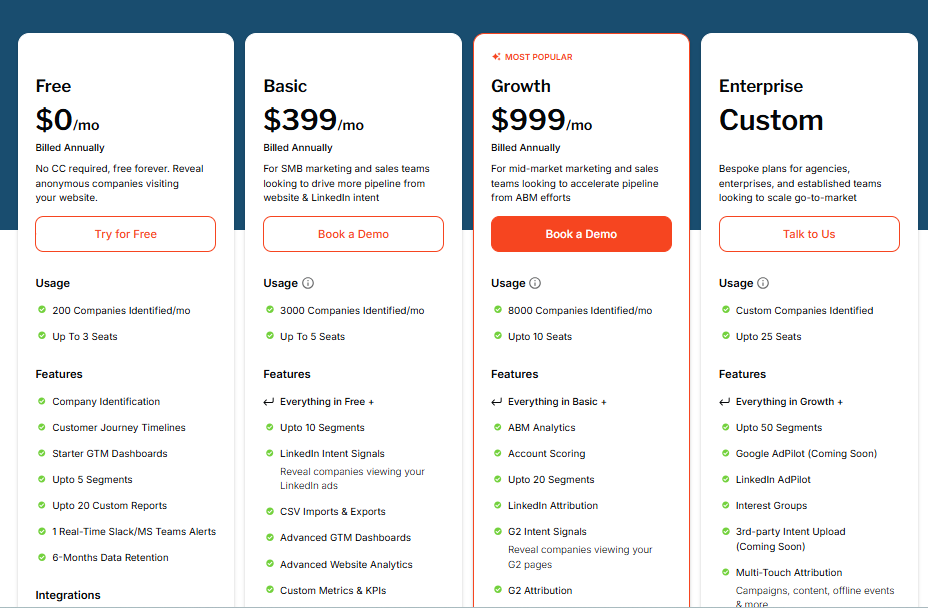
Factors.ai’s pricing is subscription-based with tiers, which is somewhat unique in a space where many ABM/attribution tools are enterprise-priced with custom quotes. Here’s a quick overview (as of recent information):
$0 forever for basic use – identifies up to 200 companies/month and 3 user seats. This includes the core of company identification, basic journey analytics, a few segments/reports, and one Slack alert.
This is great for small teams to dip their toes in ABM analytics at no cost.
Around $399/month (annual) or $549 month-to-month. Geared towards SMBs focusing on website and LinkedIn intent. It allows 3,000 companies to be identified per month, and up to 5 users. This tier adds more segments (10), more custom reports, LinkedIn intent (the ability to see which companies viewed LinkedIn ads), and integrations like the core ad platforms, Google Search Console, Slack/Teams, basic CRM (HubSpot/SFDC limited to companies & deals). It covers most fundamental features; its focus is on providing multi-touch attribution and web analytics for growing teams.
Around $999/month (annual), meant for mid-market teams and serious ABM programs. It ups the limit to 8,000 companies/month and 10 users. Importantly, it unlocks full ABM features: Account Scoring, ABM Analytics dashboards, LinkedIn Attribution (view-through analytics), G2 intent integration, and Segment insights. Integrations-wise, Growth includes Marketo, full Salesforce & HubSpot sync (all objects), G2, Drift – the whole ABM toolset connected. This is the plan aimed at ABM-focused teams who want everything Factors.ai offers. Given the functionality, $999/mo is quite competitive compared to some legacy attribution tools or ABM platforms that can cost many times that. The blog notes that Factors.ai’s high-tier plan is more affordable for startups/SMEs and comes with plenty of support.
Custom pricing (for large teams, agencies, or those needing more than 10k accounts/month). This includes up to 25 seats (or more), higher usage limits, and features like LinkedIn and (forthcoming) Google AdPilot, Interest Groups, and support for custom integrations (Segment, RudderStack, or any bespoke data source). Essentially, this plan is for companies that may need white-glove onboarding, SLAs, and possibly specific new integrations. Even here, the emphasis is on giving flexible tools (e.g., building 50+ account segments, hundreds of reports) to scale ABM analytics across big organisations.
If your primary platform for running ABM is LinkedIn, ZenABM might be the most affordable yet complete alternative for Factors.ai
ZenABM, purpose-built for LinkedIn ads ABM, has these features:
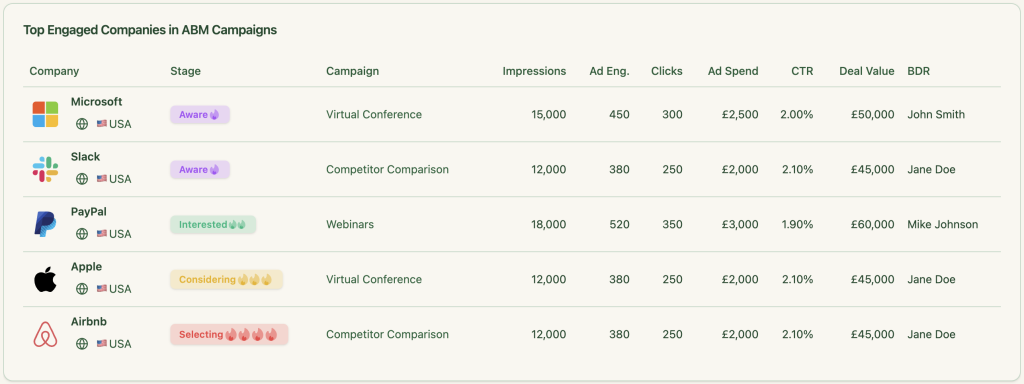
ZenABM pulls company-level first-party data per campaign using LinkedIn’s official API.
This ensures:
Scoring your leads is essential to any ABM campaign. It ensures your BDRs won’t spend time reaching out to inactive leads.
ZenABM automatically scores company engagement based on recent LinkedIn interactions, not just historical engagement. It calculates a Current Company Engagement Score within your selected timeframe (e.g., the last week). Hottest accounts are identified instantly, and their ABM Account Stages update in HubSpot automatically.

With ZenABM, your marketing and sales team stay on the same page.
ZenABM assigns your BDRs to accounts in the “interested” stage automatically and pushes this information instantly to your HubSpot CRM:

ZenABM pushes all engagement data into HubSpot (more CRM integrations coming soon) as a single company property (text string). It syncs both quantitative data (e.g., impressions, clicks) and qualitative data (e.g., each company’s engagement metrics with each specific campaign) from LinkedIn Campaign Manager to HubSpot:
These engagement metrics are pushed to HubSpot as company properties like “LinkedIn Ad Engagements – 7 days” and “LinkedIn Ad Clicks – 7 days,” and are updated weekly.
Also, LinkedIn refuses to show engagement data if the interactions per company are less than 3 in a specific time period. Zenabm solves this by aggregating data at the campaign-group level.
This ensures your marketing and sales folks can see each company’s engagement with each specific campaign, without manually updating these details in HubSpot.
If you build different LinkedIn ad campaigns based on user intent/use case, this will help your BDRs reach out to your leads with highly personalised messages.
Say, you sell a product analytics software. Now, if you see a company significantly engaging with your “path analytics” ad and not “session replay” ad, you know what to talk about in your outreach email/message.
Once you have made your campaigns based on different intents, you can label them intent-wise in ZenABM and push intent as company property to HubSpot:
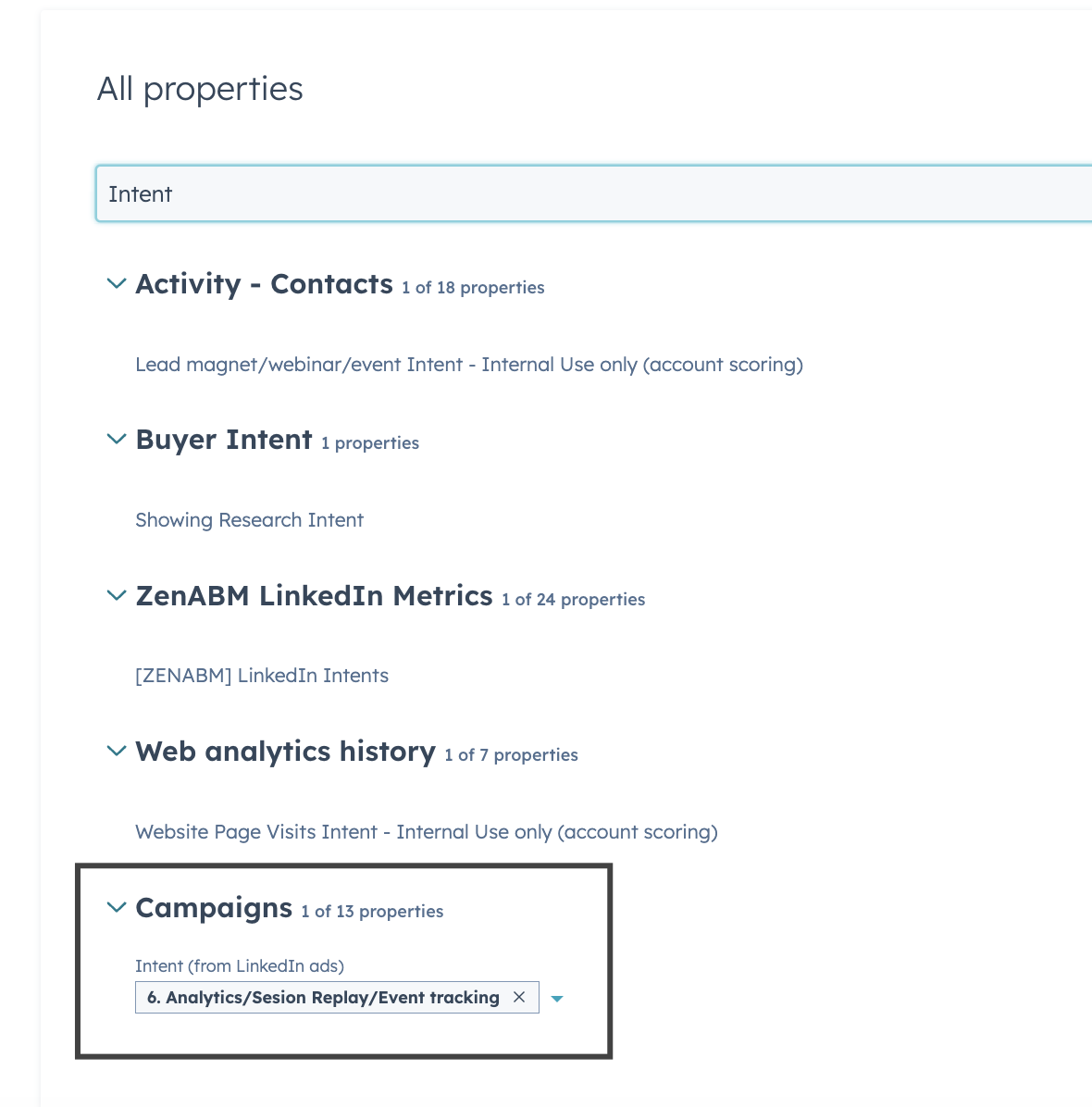
So now your BDR will not only know the company’s engagement level with your ads but also what feature/use-case of the product entices the company!
ZenABM, using its two-way connection between LinkedIn ads and HubSpot, matches the deals in your CRM with the companies that engaged with your ad campaigns.
So, you can see the influence of your LinkedIn campaigns on your sales pipeline and measure the ROI of ad spend.
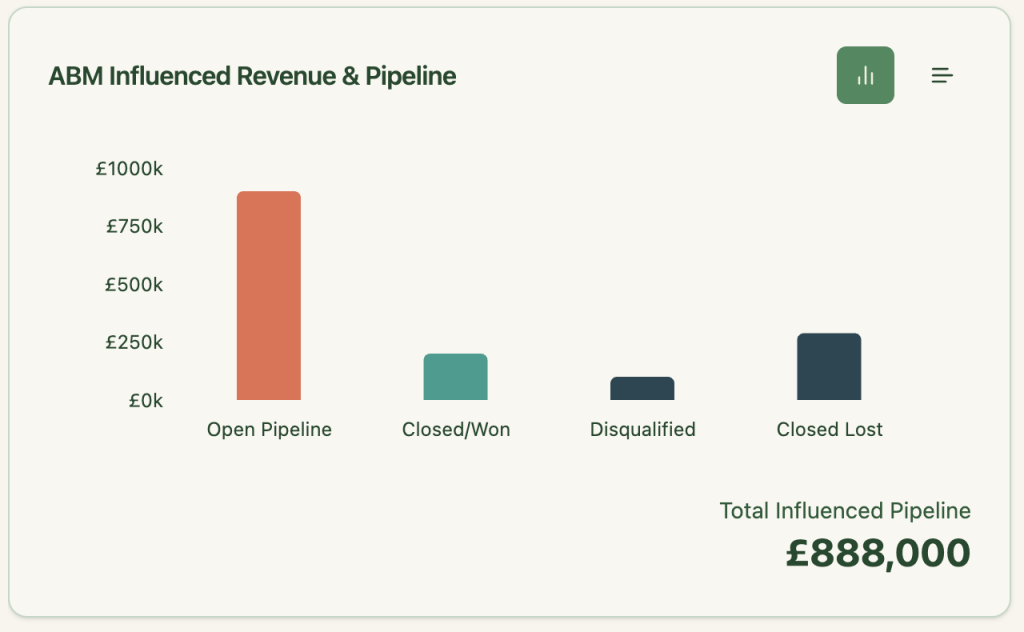
Not just the overall pipeline, you can also see the value of each deal as matched from your CRM:

ZenABM hosts comprehensive out-of-the-box account intent & ABM campaign effectiveness analytics dashboards:

From calculating ROI, Total Revenue, Total Pipeline and ROAS to the Number of companies targeted and their ABM stage, ZenABM does the heavy lifting for you!
As ZenABM lets you see which companies interacted with which exact campaigns/campaign groups, you can retarget them using personalised ads.
Here’s an example of how you can go about it:
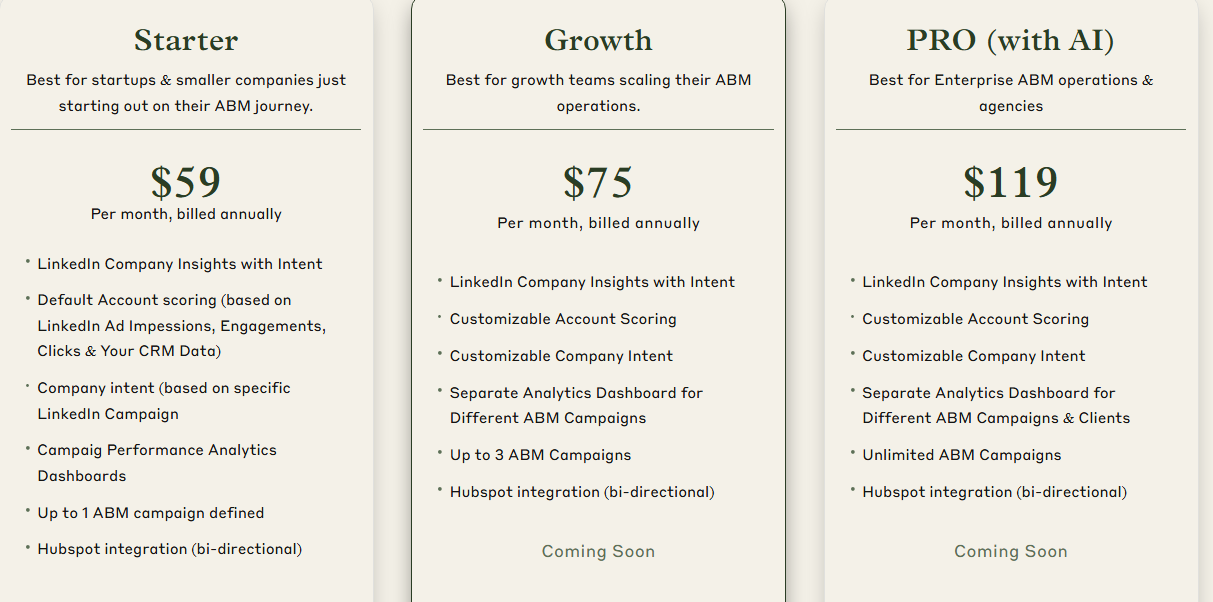
ZenABM offers three straightforward plans designed to grow with your ABM journey.
The Starter plan at $59/month (billed annually) is perfect for early-stage teams, offering LinkedIn company insights, default account scoring based on ad and CRM data, campaign-level intent, one ABM campaign, and native HubSpot bi-directional sync.
The Growth plan, at $75/month, adds customizable scoring, separate dashboards for up to 3 campaigns, and upcoming features like BDR assignment, Slack alerts, and weekly email reports.
For enterprise teams and agencies, the Pro plan at $119/month unlocks unlimited campaigns, client-specific dashboards, and upcoming AI-powered workflows like smart impression capping and campaign automation.
All plans come with a free trial, and if you need to know more, you can book a demo here.
Very visibly, Zenabm is far more affordable if all you want to run is a LinkedIn ads ABM campaign.
Factors.ai is a powerhouse for B2B teams serious about ABM. From ad tracking and account intelligence to GTM workflows and attribution, it offers an impressive stack, especially if you want full-funnel visibility and deep integrations.
But let’s be honest: not everyone needs/uses so many features.
If your ABM focus is squarely on LinkedIn ads, and you care more about company-level engagement, pipeline attribution, and native CRM sync than juggling a dozen tools, ZenABM might be all you need, at a fraction of the cost.
Explore ZenABM – purpose-built for LinkedIn ABM.